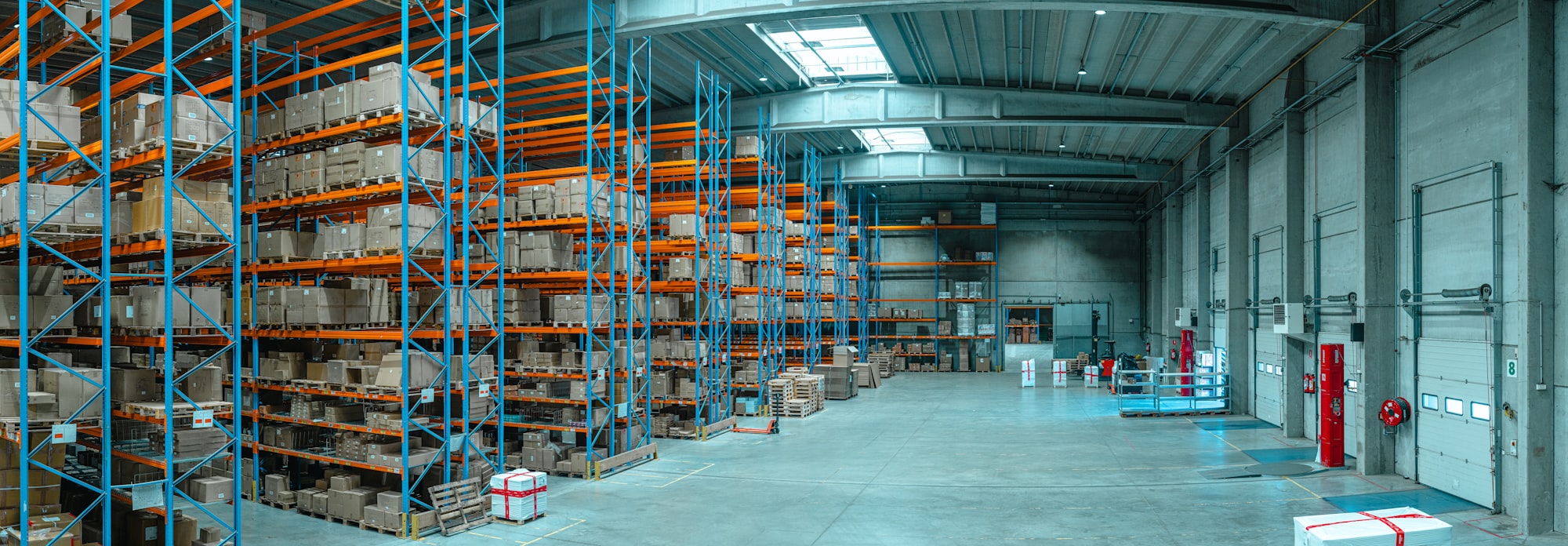Which OMS Features do I Need?
The Order Management Solution landscape is continually changing. Upgrades and technologies are introduced at a breakneck pace. Each OMS has different capabilities and options. Most vendors give long lists of features, and sell them very well to prospective clients.
So how do you figure out which OMS features are the most important for your business and particular needs? For example, should the OMS cater for multiple sales channels and fulfilment methods? Do you have multiple warehouse locations? Are there other needs in your supply chain that need to be met?
This article will guide you through some of these questions and help you determine which OMS features will best suit your particular situation.
Factors to Consider when Choosing an OMS
Regardless if you’re a big box retailer or a more modest operation, there are certain factors that you have to consider when deciding on an OMS:
1. Integration with your Current Systems
An OMS is not supposed to work separately from the other systems and software you use in your company. It has to integrate closely with all the departments and operations in your network.
For example, the OMS must be able to communicate with your current accounting tools as well as the systems you have in place to do inventory management. What about your eCommerce platform or other marketing tools? Will the OMS be able to talk to those software platforms and share data with them? Even if the OMS takes over many of these functions, there will always be a transition phase where your current data and systems need to be transferred over to the new OMS.
Even the most complete OMS system needs to integrate with your current systems to some degree. Furthermore, any integration has to be reliable and efficient—which comes down to the underlying programming frameworks used to create these integrations. How do you expect to achieve integration? Will the OMS vendor provide you with integration tools, or do you need to develop it in-house? Are we talking here about direct or indirect integration?
List all of the current apps, services and software packages you currently use. Be sure to include the different sales channels that you have to cater for, the marketing tools you use on a daily basis, and other tools you use to make your business work. Ask the vendor whether the OMS integrates with those packages. The right OMS for your business shouldn’t require you to change your entire setup to get it to work.

2. Supply Chain Considerations
No business operates in a vacuum. If you are a retailer, you function as a part of a much larger supply chain. To have products to offer for sale, you must source raw materials and finished products from one or several suppliers. Then you have to hand those products over to other distributors and third-party logistics(3PL) partners to get the products into the hands of consumers.
So the question becomes, will the OMS be able to share data with your supply chain partners? What impact will your system have on the supply chain as a whole? Will a specific OMS make it more difficult to process orders from the suppliers you use? Will the OMS prevent you from integrating your system with your favourite 3PL provider? If so, you might have to consider a different OMS setup.
Furthermore, you have to make sure the OMS offers the fulfilment options you need. Will the OMS integrate with your current shipping providers? Will the software allow you to split orders, hold an order back, or source alternative fulfilment methods from the ones you are currently using?
You have to make sure that the system allows you to use the fulfilment methods that are the most cost-effective and efficient for your business. Efficient coordination between the different stages of your fulfilment process is key. You will also want a system that cuts out manual labour by automating parts of the order fulfilment process.

3. Inventory Management Considerations
If you are a retailer, managing inventory is one of the cornerstones of your business. That's why effective inventory management should form an integral part of any OMS you choose.
The OMS should be able to automatically adjust inventory levels, regardless of the sales channels you use. It should also be able to make it easier for you to take in new stock. Furthermore, it should be able to make data-driven recommendations on how much new stock you need to order.
Take it a step further. The best system for your needs should be able to predict your future sales figures and automatically create the necessary purchase orders to replenish stock. Why should you have to bear the responsibility of these tasks, if an automated system could figure out the numbers for you?
Make sure that the OMS you choose caters for the different types of inventory you stock. Do you allow your customers to configure your products? Do you offer product bundles? Make sure the OMS is able to process all your product lines.
Finally, consider your warehousing situation. Could a single system take over the inventory management tasks for all the warehouses, instead of running a separate system for each? This would make full inventory visibility a breeze, since you will be tracking those numbers in one system, instead of several.
4. Different Sales Channels
It's important to list all of the sales channels you use in your business. The OMS must be able to accomodate all of them in one place. Try to avoid manual processing in one or more of your channels. You might be able to handle the workload now, but what if your sales increase?
Think about the number of additional staff members you will have to bring on board to do all of that manual work—work that could have been easily handled by a centralised, automated platform. A larger team will cost more. Calculate how much you could save by automating these processing tasks in a single (if more expensive) software solution.

5. Reporting and Analysis of Sales Data
The best OMS for your needs should be able to automatically generate useful information about the profitability of your company. Are you running at a profit or a loss? The system should be able to generate a profit margin report for each of your product lines. This will help you figure out which lines to keep and which to cut to improve your bottom line.
An OMS system shouldn't just track your current performance but should also be able to help you identify market trends and consumer spending patterns. This will help you to predict future sales and trends and plan for what lies ahead.
When choosing an OMS, look at the various reporting options if offered. For example, you might want to consider the following:
- Are you able to keep tabs on the performance of a specific product or sales channel over a period of time?
- Is the system able to generate demographic reports and help you understand your customer base better?
- To what level of detail does the system allow you to track your sales numbers? You won't be able to make good business decisions if you don't have a clear picture of your performance.
- Does the system give a clear picture of your business profitability—one that updates in real time?
- Does the system help you to predict future demand based on your current sales and data?
It's extremely useful to get current, accurate information from every aspect of your business. If you have a clear picture of your customer base, you will be able to target the most profitable market sectors with tailored marketing. If your sales figures are accurate and up to date, you will make better decisions with regards to restocking your inventory.
With accurate and regular profit and loss reports, you will have a precise picture of your current financial health. If the OMS doesn't offer this level of reporting, you're missing out on one of the key benefits of using an OMS in the first place.

6. Impact on Customer Experience
The typical OMS isn't designed to be used directly by the public. Nevertheless, the choice of OMS can have a marked impact on your overall customer experience. When the OMS is taking care of the business in the background, your customer satisfaction numbers will be better. And if the system causes delays and inefficiencies in your product fulfilment, your customers won't be happy either.
For example, if the OMS is limited to a single sales channel, or if it can only process orders in one currency, this will directly impact your customer experience. Customers won’t be able to do business with you acroos several sales platforms. Customers in other countries will be unable to shop in their local currency. In the end, these limitations will hurt your business. Make sure that you take the customer experience into account when choosing an OMS.
7. Future Scalability of the System
Like most retailers, you probably have high hopes for business growth. The potential for growth in the eCommerce space is immense. So why limit yourself to your current sales bracket? You want your company to increase sales and you want your company to grow. You want to develop your business and reach the next level in the shortest amount of time possible.
This is why you don't want to be stuck with a limited OMS because you didn't consider your future growth and prospects. Scalability is something you have to consider when adopting any new technology. Will the technology be able to grow with my business? Is it expandable or am I stuck with my current configuration?
Think about your brand, and where you want to be as a company in five years. Do you want to expand to more sales platforms? Do you expect your sales volume to double or triple in the next five years? Do you want to try out different business models—or even one of the exciting new emerging technologies like artificial intelligence? Will my OMS be able to grow as my business grows?

8. After-Sale Service and Support
When you start using an OMS, you can’t just pay the vendor and go merrily on your way. This isn't the type of software installed once then used forever. Implementing an OMS takes a lot of work and dedication—and a level of technical expertise that you probably don't have right now.
When you buy an OMS, it's the start of a long and hopefully fruitful relationship with the software vendor. Take a serious look at their after-sales service and support before you commit to their product.
Firstly, how much is the vendor going to help you implement their system? Are they readily available to help you take the first step? Will they help you manage the switchover from your current systems to theirs? Are they going to train your team members who are going to end up using their system?
If the answers to these questions are “no”, you are probably better off by using a different vendor. A system that doesn't function to specification is no use to you. If your team members can’t use all of the functionality of the program, why would you pay for all of those features? You might as well go with a lesser system, but one you can actually use.
Find out if the vendor is going to help you run and adapt their system in the long run. If there's a problem, do they offer 24/7 support? Will they guide you towards achieving the best workflows for your company? The best setup for your scenario might not be obvious, so their guidance in this regard is invaluable.
An OMS is a complex system. You will probably need continual training and support to keep up with new features and get the most out of your purchase. Good product support can make a real difference to your bottom line. Remember that you are the customer. You deserve to get the most value from your OMS.

Conclusion
Different OMS packages have different approaches and features. So how do you decide which of those features are essential to the future of your business, and which can only be considered to be “filler” features?
In this article, we looked at several facets of the order fulfilment process that will guide you to answering these questions:
- Integration with your current systems
- The needs of your supply chain
- Inventory Management needs
- The number of sales channels that can be accomodated
- Reporting and analysis of sales data
- The impact on customer experience
- The scalability of the OMS; and
- The level of after-sale service you can expect from the OMS provider
The right OMS will allow you to automate the supply chain for each of your product lines, increase sales, increase productivity, decrease cost, and ultimately grow your business.